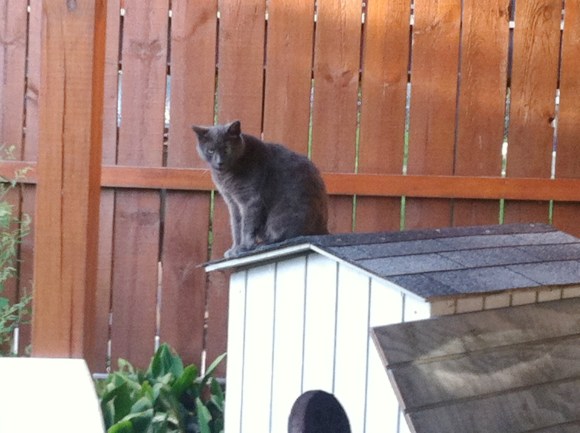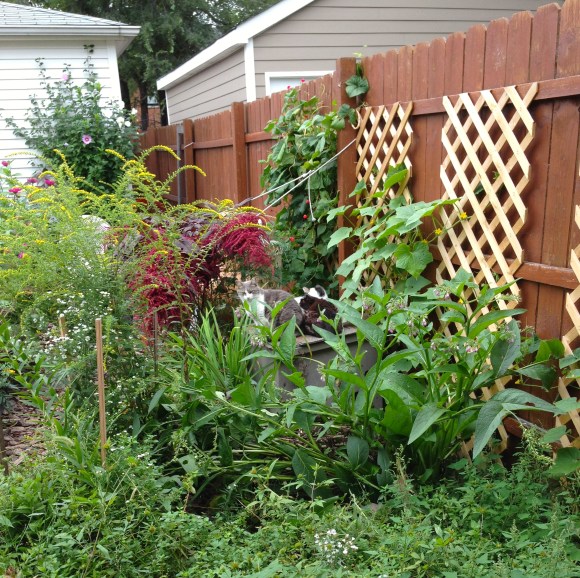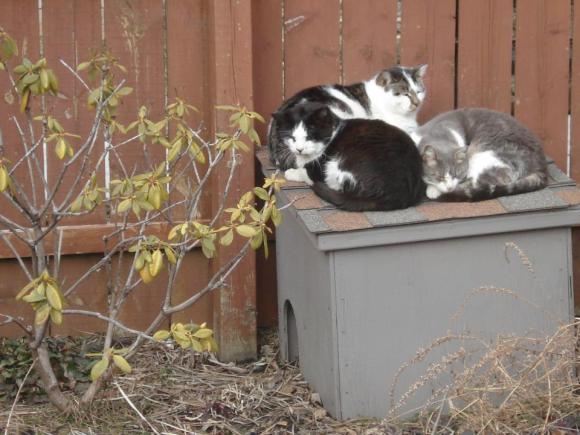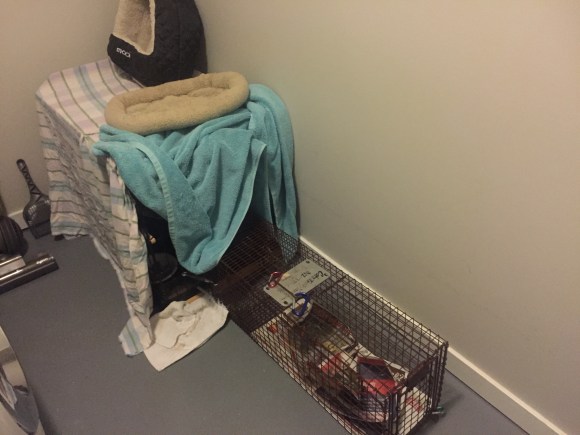Recommending a Full Service Cat Sitter: Mama Bear Pet Care
Going out of town when you have multiple cats can be stressful. Not only are there pet cats to care for, sometimes with medical needs, but there can also be foster cats, sick feral cats resting in recovery lounge crates, and outdoor cat colonies.
Greer from Mama Bear Pet Care handles all of the above scenarios and then some. She cat sat for me a few times this year now. She has been a cat sitter for 20+ years, worked as a vet tech, and volunteers as a wildlife rehabilitator for Flint Creek Wildlife Center. She doesn’t just cat sit – she also cares for dogs and other pets.
In fact, she is currently pet sitting for a woman fostering a dog and her seven puppies for PAWS Chicago. Here’s Georgia and her one week old puppies.

Greer and I met last year when she adopted two former feral colony cats from me. Both of these cats ended up separately in animal control facilities. Their microchips were traced to me and saved their lives.
Louie is now the poster cat for her business. Louie is FIV+. So is his sister here that Greer adopted from Lulu’s Locker Rescue.


Emrys is a bit more shy, but he is now also a total house cat. Emrys does not have FIV, and he mingles freely and safely with his cat friends. More and more progressive shelters are adopting this approach.

See? Here they are together. They came from two different colonies with two different feeders a few blocks apart. I like to think they knew each other on the street and are reunited in Greer’s home.

When we were out of town last May I had Zombie Cat isolated and recovering in a feral cat recovery lounge. Here’s what the lounge looks like from the outside. It’s a crate with a Tru-Catch trap attached to it.

You could not touch her, but Zombie Cat was safely inside here and resting with a bed, litter box, food and water.

Zombie Cat is fully feral, and at the time, was in my house very sick with a URI, recovering from dental surgery, and required daily antibiotics. Greer took care of her and offered holistic suggestions from her own experience.
The cats in my yard also got her full attention. Greer kept their feeding stations clean and full of fresh food. While we were gone she gave me updates on their eating habits and who showed up for dinner.
She sent me photos. In fact, all of the photos in this post are taken by her.
Her photos made me smile because it obviously looked like business as usual and the cats barely noticed we were gone.
Bouncy Bear and Dice were still dining together.

Dash checked her out from the Jim Villa.
 And Funny Face stayed back on the Feral Villa.
And Funny Face stayed back on the Feral Villa.

Of course Greer didn’t forget my pet cats, Mooha and Mini. Mini is semi-feral and mostly bonded to me, but Mooha loved Greer.

I can’t say enough about Mama Bear Pet Care. Greer cares deeply about animals, and has devoted her life to caring for them in her home, in her work, and as a volunteer.




















































































